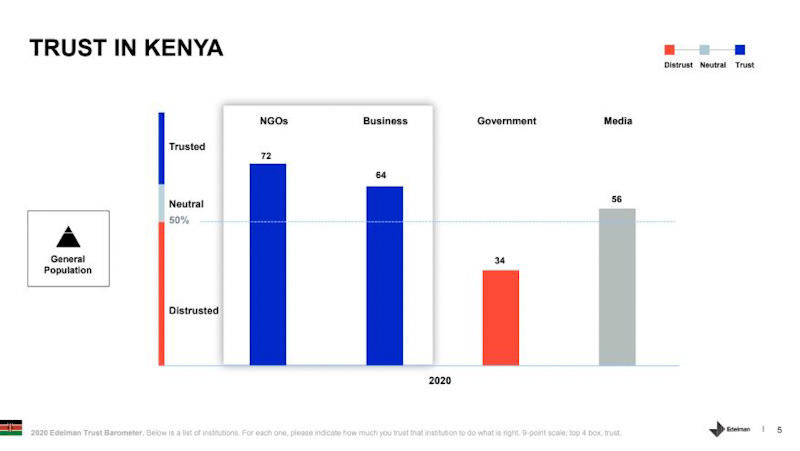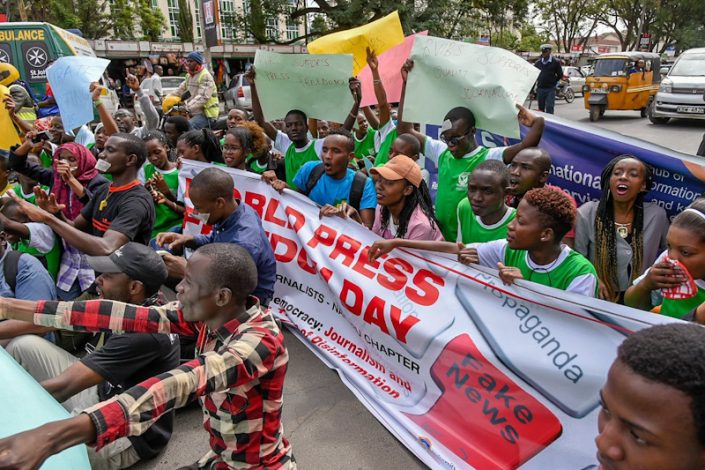Today, new forms of communication are reshaping the practice of a once narrow-minded craft serving a local, regional or national public. Thanks to technology that is enabling people to accesses instantaneous multimedia communication networks, products, and services.
The same technology has allowed news media to disseminate information to audiences scattered around the globe.
Consequently, the ongoing mobile revolution has become a powerful tool and voice of an audience that was initially perceived as passive.
Social media and mobile technology are weakening state control and information dissemination. Social media users are conduits, amplifiers of media messages, and potential sources.
Findings from the Kenyan Social Media Landscape: Trends and Emerging Narratives, 2020 report published by USIU-Africa, in partnership with the U.S Embassy Nairobi, social media sites and apps have become the new home where Kenyan families, friends, influencers, brands, and bloggers converge multiple times daily to share updates and communicate.
For instance, the Edelman Trust Barometer 2020 study that measures trust across four institutions: Government, Business, NGOs, and the Media. According to the findings, NGOs and businesses were the most trusted institutions in Kenya, before the outbreak of the virus.

One key contributing factor is disinformation or fake news. Guy Berger, the Director for Policies and Strategies regarding Communication and Information at UNESCO in an interview with the United Nations said, “When disinformation is repeated and amplified, including by influential people, the grave danger is that information which is based on truth, ends up having an only marginal impact.”
The Kenya Social Media Landscape Report 2020 finds out that over eighty-six percent (86.2%) of Kenyans say that they have come across false, incorrect, or inaccurate news on social media and are likely to have shared the misinformation, with only 13.8 % reporting that they have not come across any false and inaccurate information.
Fake news results in negative impacts according to UNESCO. It erodes trust in news brands, journalism, and individual journalists who share inaccurate, fabricated, or misleading information. Further, it leads to the weakening of the role of journalists as agents for accountability with flow-on effects for the broader society.
Freedom on the Net, a comprehensive study of internet freedom in 65 countries around the globe, covering 87 percent of the world’s internet users in 2019 stressed that “The future of internet freedom rests on our ability to fix social media.”
Fake news could lead to censorship, the suppression of critical thinking, and other approaches contrary to human rights law, a grave violation of civil liberties.
Digital technologies are widely used to advocate for, defend, and exercise human rights – but also to violate them. It is also used to violate rights by spreading lies that incite hatred and foment violence, often at terrible speed and with the cloak of anonymity.
As a result, “We must collectively ensure that advances in technology are not used to erode human rights or avoid accountability,” Report of the UN Secretary-General’s High-level Panel on Digital Cooperation, the age of digital interdependence states.
“All citizens can play a role in building societal resilience against the misuse of digital technology. We all need to deepen our understanding of the political, social, cultural, and economic impacts of digital technologies and what it means to use them responsibly.
Digital journalists produce content initially for multiple digital platforms: news websites, blogs, social media, text alerts, email alerts, and newsletters.
This simply justifies that freedom of expression is being exercised in all dimensions and ought to be respected.
It is worth noting international convention treaties and national legislations provide for the safety and protection of journalists and media professionals.
For instance, in Kenya, Article 2 (5) of the Constitution states that the general rules of international law and any treaty or convention ratified by Kenya forms part of the law of Kenya.
Key among them include International Covenant on Civil and Political Rights Article 19 (2), Article 19 of the Universal Declaration of Human Rights, Article 9(1) of Africa Charter on Human and Peoples Rights, The UN Security Council Resolution 1738 (2006), among others.
Nationally, the Constitution of Kenya upholds media freedom under Article 34.
“(1) Freedom and independence of electronic, print, and all other types of media is guaranteed but does not extend to any expression specified in Article 33 (2).
(2) The State shall not:
(a) exercise control over or interfere with any person engaged in broadcasting, the production or circulation of any publication or the dissemination of information by any medium; or
(b) penalize any person for any opinion or view or the content of any broadcast, publication or dissemination.”
The only limitation or regulation of this freedom is expressed in Article 33 (2),:
“(2) The right to freedom of expression does not extend to:
(a) Propaganda for war;
(b) Incitement to violence;
(c) Hate speech; or
(d) Advocacy of hatred that –
(i) Constitutes ethnic incitement, the vilification of others or incitement to cause harm; or
(ii) Is based on any ground of discrimination specified or contemplated in Article 27 (4)”
Article 33 protects and entrenches the Freedom of Expression in all its manifestations, including the freedom to seek, receive or impart information or ideas, including artistic creativity, academic and scientific research, but with limited exceptions to propaganda for war, incitement to violence; hate speech or advocacy of hatred.
Article 35 of the Constitution provides guidance when it comes to Access to information.
The Media Council of Kenya (MCK) says concerning misinformation in the country, Article 33 can be used in specific circumstances and the Computer Misuse and Cybercrimes Act came into effect following the decision of the court on its constitutionality.
In conclusion, journalists and content creators need to be aware of the application of existing laws and case law to platforms like social media. This is because like traditional journalists, we need to strive to publish verified facts. A commitment to seeking and reporting the truth, going beyond what people said to learn and report the actual truth.
Our content should be fair which is achieved by finding and reporting the truth. As we do so, we shall be minimizing harm by exercising care and compassion in publishing information about victims of crime, and minors.
Being accountable for our actions because we hold the most powerful in our communities accountable and recognize that we must be accountable ourselves.
Above all, journalists, content creators, and human rights defenders must always advocate for freedom of the media and freedom of speech to effectively cover all aspects of digital communication.





2 Comments
Pingback: Homeboyz Radio Fined Ksh 1mn for Violating Programming Code
Pingback: World Press Freedom Day: UK Minister for Africa To Address Eastern Africa Editors Society